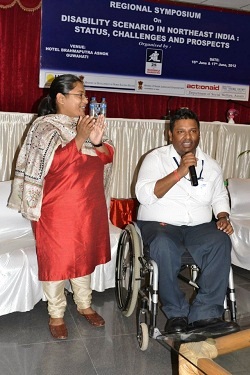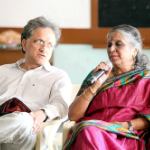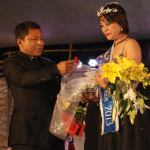It could be of some interest that the Archaeological Survey of India (ASI) had done some preliminary excavation work at the site of some ancient ruins located in Wadagokgre (Bhaitbari) village in the plains belt of West Garo Hills District of Meghalaya. During my official tours in Garo Hills I had visited the site and later read reports about the findings of the ASI about this place. It was reported that this was the location of an ancient fortified city spreading over an area of around 20 square kilometres, the largest ancient city found so far to the east of the Brahmaputra river.
These ruins date back to the 7th century A.D. and could well be Pragjyotishpur, the capital of ancient kingdom of Kamarupa . This information fascinated me and led to my doing some research and a lot of digging/reading into ancient history of Assam. That is when I came across Bhaskara (or Kumar Bhaskara Varman), the last among the Varman kings of Kamarupa who existed during the 7th century A.D. and other characters who are also mentioned in the book. The story of Bhaskara was so interesting that I decided to write a book about it.
The book which I have written with the title Bhaskara: The Last of the Varmans is a historical fiction based on the discovery of the ruins of an ancient city by the Archaeological Survey of India and the story that emerges from the findings. I am not a formal student of history but in my spare time I sometimes like to read historical articles which interest me. The story revolves around Bhaskara, who is the central character of the book. Bhaskara is a prince of the ancient Varman dynasty that ruled Kamarupa for 300 years. A psychic predicts that he will be the most capable but last king of his line. He has studied under the monks at Nalanda and his love for hunting and the outdoors in the jungles and wild hills that surround ancient Kamarupa has made him a survivor, which also helps him to cope with difficult circumstances.
He is later called upon by Harshavardhana, King of Thanesar, to join with him in teaching a lesson to Sashanka, King of Gauda and at the same time to free Princess Rajyasri from captivity. This adventure dramatically changes Bhaskara's fortunes. During his 45-year reign, Bhaskara rules Kamarupa from the City of Eastern Light, near the confluence of the river Jinjiram and the mighty Songdu (Brahmaputra).The great city is eventually devastated by a natural calamity and Salstambha the successor to Bhaskara shifts the location of the capital of Kamarupa. Over a thousand years later, the ruins of the ancient city are discovered and the story of the times of Bhaskara, the last king in the Varman dynasty comes to light.
Find us on facebook: facebook.com/TheThumbPrintMag







































